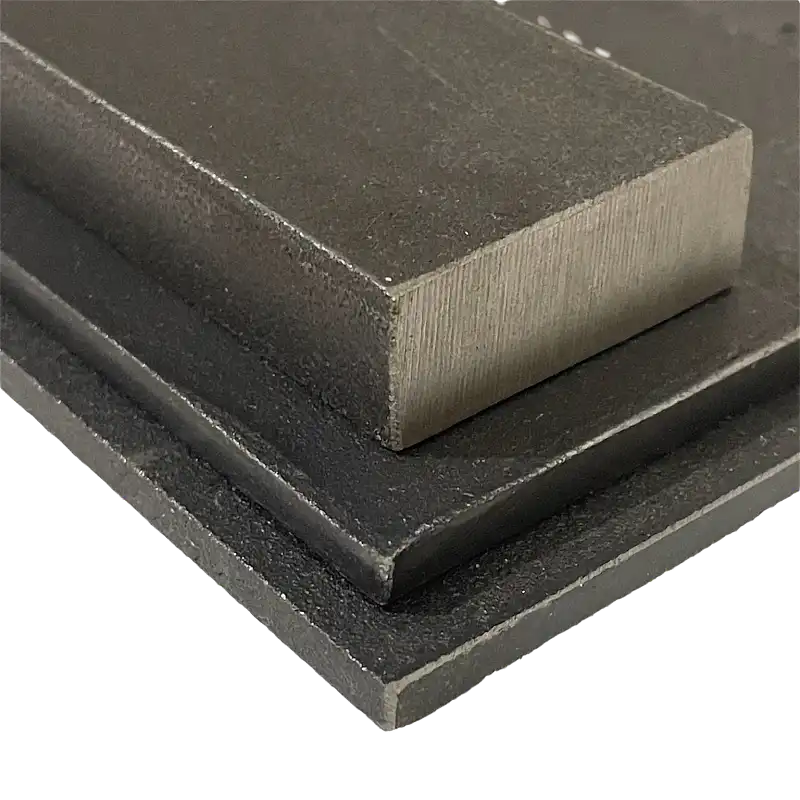
A new steel developed specifically for handmade knives.
ApexUltra is a steel truly worth of handcrafted knives. It is a low alloy design that is forgeable, forge-weldable, and its fine carbides make the steel relatively easy to finish and sharpen. With its high purity and well-balanced alloy composition it has the highest toughness of all knife steels tested so far in the 66+ HRC range along with excellent edge retention.
Tungsten 2.60%
Vanadium 0.40%
Chromium 1.50%
Manganese 0.30%
Silicon 0.35%
Which knives is ApexUltra best suited for?
With its combination of high hardness and toughness, ApexUltra works very well in knives with thin, acute edges. Culinary knives, razors, and carving knives are examples of good applications.
Yes, the steel is forgeable as well as forge-weldable. The forging and forge-welding behavior can be described as similar to 52100 / 1.3505 / 100Cr6 or F2 / 1.2562. So, this is not a steel recommended for absolute beginners, but it is perfect for anyone seeking the next level of performance in carbon steel knives.
Actually, there has been little research on new carbon steels for fine cutting knives as this is a not a field that the tool steel industry is interested in. The focus of the knife steel development has been in the stainless sector with optimizing slicing edge retention rather then fine edges for push cutting. Consequently, there are many ideas left explored in the area of steels that are well suited for bladesmiths to forge into fine cutting knives.
Despite the high hardness, it is rather easy to sharpen and does not require special diamond sharpening tools. Whetstones and leather strops are effective for knife care, and with the fine microstructure very keen edges can be achieved. A honing rod is only recommended for the lower hardness levels and should always be used with care not to damage the edge. Experienced sharpeners have, however, successfully used very fine honing rods up to high hardnesses as well.
There will be a variety of recommended heat treatment protocols for you to chose from once the batch has been delivered to us and we have had the chance to test this exact batch. We will make sure that there is a recommended procedure for different hardness levels and applications, and with Larrin’s new video about heat treating in the gas forge out, we are even playing with the thought of adding a recommended procedure for gas forge heat treatment. Although we strongly recommend a more precise method for heat treating any steel. ApexUltra is designed to have balanced hardenability: high enough that full thickness knives will harden in oil without using a risky water quench, yet low enough in hardenability that the steel is easy to anneal by placing in slow cool media like vermiculite or perlite.
Heat treat info link:
knifesteelnerds.com/2022/09/06/how-to-heat-treat-apexultra-knife-steel/
How is ApexUltra better than other steels?
Hardness and toughness are typically a balance where you sacrifice the one to gain the other. There are only few factors which benefit both – Purity and homogeneity as well as a fine grain and fine carbides are what we strive for in the perfect steel for knife applications.
Purity
Most steels contain some inclusions which do not benefit the steel but represents small defects, where cracks and corrosion can begin their attack on the steel. If there are fewer points to easily start a crack, the overall toughness of the material increases. Why aren’t all steels super pure? It requires additional steps in production which costs money, and the cheaper quality suffices for many general applications. Not everybody spends hours of work on a few hundred grams of steel to make a tool that is designed to end in an infinitely thin edge.
Homogeneity
As with purity, homogeneity is important to make the entire material consistent – this ensures that there are no soft or brittle spots in the material so that the overall blade is durable.
A fine grain
A fine grain increases hardness as well as toughness at the same time. A proper heat treatment protocol will ensure that you get the most out of the steel but the steel design itself can also help: The presence of small carbides at forging and heat treating temperatures ensures that there is no drastic grain growth during processing so that a fine grain structure is easier to achieve.
Fine carbides
The volume fraction and hardness of carbides control edge retention in CATRA and rope cutting endurance tests. The size of the largest carbide correlates with the toughness of a material, so fine and hard carbides will usually get the most edge retention for a given toughness. Existing low alloy, high hardness steels contain either larger primary carbides and/or plate martensite – both decrease toughness drastically. ApexUltra is designed to avoid these problems, and the successful structure can be seen in the micrographs as well as the hardness / toughness ratio diagrams.


